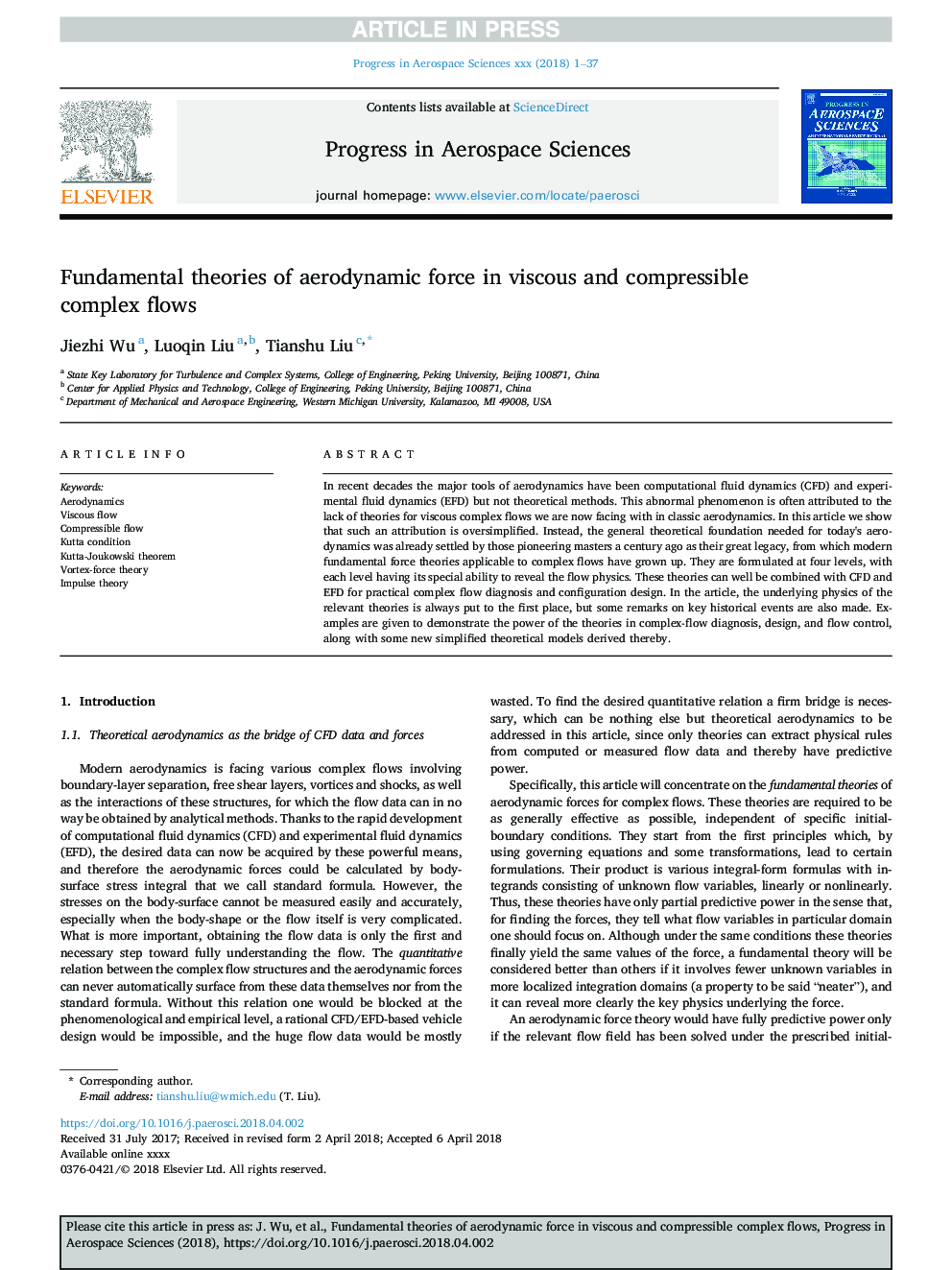| Article ID | Journal | Published Year | Pages | File Type |
|---|---|---|---|---|
| 8059065 | Progress in Aerospace Sciences | 2018 | 37 Pages |
Abstract
In recent decades the major tools of aerodynamics have been computational fluid dynamics (CFD) and experimental fluid dynamics (EFD) but not theoretical methods. This abnormal phenomenon is often attributed to the lack of theories for viscous complex flows we are now facing with in classic aerodynamics. In this article we show that such an attribution is oversimplified. Instead, the general theoretical foundation needed for today's aerodynamics was already settled by those pioneering masters a century ago as their great legacy, from which modern fundamental force theories applicable to complex flows have grown up. They are formulated at four levels, with each level having its special ability to reveal the flow physics. These theories can well be combined with CFD and EFD for practical complex flow diagnosis and configuration design. In the article, the underlying physics of the relevant theories is always put to the first place, but some remarks on key historical events are also made. Examples are given to demonstrate the power of the theories in complex-flow diagnosis, design, and flow control, along with some new simplified theoretical models derived thereby.
Related Topics
Physical Sciences and Engineering
Engineering
Aerospace Engineering
Authors
Jiezhi Wu, Luoqin Liu, Tianshu Liu,
